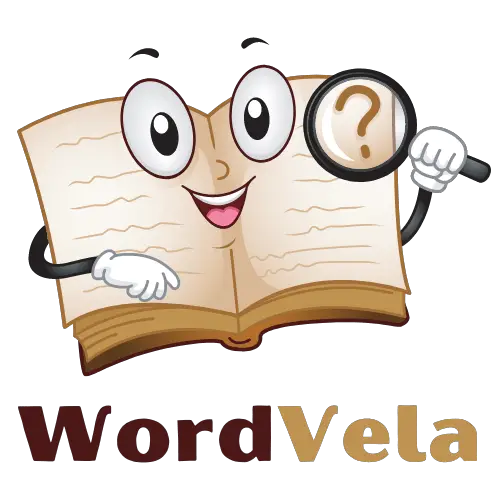Is Have a preposition? This question often arises in discussions about parts of speech. Understanding the role of “have” can be quite perplexing due to its versatility in different contexts.
In some instances, “have” functions as a main verb, expressing possession or ownership, as in “I have a car.”
However, it can also act as an auxiliary verb in perfect tenses, such as “I have seen the movie.” Despite its complexity, “have” is not classified as a preposition.
Instead, it typically falls under the categories of main or auxiliary verbs, serving various grammatical functions.
Table of contents
Is Have a Preposition?
Prepositions connect nouns or pronouns to other words in a sentence, indicating relationships like time, place, direction, or possession.
Examples of prepositions are “in,” “on,” “at,” “to,” “by,” and “with.”
“Have” does not introduce a noun phrase or show any of these relationships. Instead, it expresses various meanings depending on the context:
Here are some examples of “have” as a verb vs. a preposition:
Verb: The book has many pages. (Here, “have” doesn’t connect anything, it shows possession.)
Preposition: The book is on the table. (Here, “on” connects the noun “book” to the noun phrase “the table,” showing location.)
Do All Sentences Have a Preposition?
No, not all sentences have a preposition. While prepositions play a crucial role in expressing relationships in time, space, and direction, some sentences can function effectively without them.
Understanding the role of prepositions in a sentence requires careful consideration of the specific context in which they are used.
For example, in the sentence “The book is on the table,” the preposition “on” indicates the location of the book. However, in the sentence “She walked the dog,” there is no preposition, yet the sentence is complete and meaningful.
Understanding Prepositions:
When it comes to understanding prepositions, delving into the intricacies of their usage can be quite illuminating. Prepositions, which typically express relationships in time, space, or direction, play a crucial role in shaping the structure and meaning of sentences.
They establish connections between various elements within a sentence, guiding readers and listeners in understanding the spatial, temporal, or directional relationships being conveyed. Recognizing the diverse functions of prepositions and their impact on sentence construction can enhance one’s grasp of language and communication.
Therefore, exploring the nuances of prepositions can greatly enrich one’s linguistic proficiency and comprehension of written and spoken discourse.
Prepositions Examples:
Examples of prepositions include:
The Case of “Have”:
In the realm of grammar, the verb “have” presents an intriguing case. It holds a multifaceted nature, serving as both a main and auxiliary verb in different contexts.
This versatility allows “have” to express possession and ownership as a main verb, while also contributing to perfect tenses as an auxiliary verb.
Such dynamic functionality contributes to the complexity surrounding its classification. Despite its diverse roles, one thing remains certain: “have” does not fall under the category of prepositions.
Instead, it firmly establishes itself within the realms of main and auxiliary verbs, exerting its grammatical influence in various linguistic scenarios.
If “have” Is Not a Preposition Then What Is “have”?
“Have” is a verb that can serve as both a main verb and an auxiliary verb in different contexts. As a main verb, it expresses possession or ownership, as in “I have a car.” As an auxiliary verb, it is used to form perfect tenses, such as “I have seen the movie.”
Examples of Have in Sentence:
Examples of “have” as a main verb:
Examples of “Have” as An Auxiliary Verb in Perfect Tenses:
Examining the Function of “Have”:
When delving into the multifaceted nature of the verb “have,” a perplexing intricacy emerges, as it seamlessly transitions between serving as a main verb and an auxiliary verb in various linguistic contexts.
The versatility of “have” allows it to express possession or ownership as a main verb, as in “I have a car,” while also contributing to the formation of perfect tenses as an auxiliary verb, as in “I have seen the movie.”
Conclusion and Final Thoughts!
The discussion about whether “have” is a preposition, it becomes evident that “have” does not fall under the category of prepositions.
Its role as a main verb for expressing possession or as an auxiliary verb for perfect tenses places it firmly within the realm of verbs.
Despite the complexities surrounding its multifaceted nature, “have” remains distinct from prepositions.
Therefore, when considering the grammatical functions of “have,” it is essential to recognize its role as a versatile verb, accommodating various linguistic contexts and contributing to the structural integrity and meaning of sentences.
FAQs
Is “have” a Preposition?
No, “have” is not a preposition. It is typically classified as a main verb expressing possession or as an auxiliary verb in perfect tenses.
Do All Sentences Have a Preposition?
No, not all sentences have a preposition. Some sentences can function effectively without prepositions, depending on the specific context and meaning being conveyed.
What Is the Role of Prepositions in A Sentence?
Prepositions typically express relationships in time, space, or direction, guiding readers and listeners in understanding the spatial, temporal, or directional relationships being conveyed in a sentence.
What Are Some Examples of Prepositions?
Examples of prepositions include “on,” “in,” “under,” “over,” “beside,” “next to,” “above,” “through,” “in front of,” and “behind,” among others.
If “have” Is Not a Preposition, Then What Is It?
“Have” is a verb that can serve as both a main verb and an auxiliary verb in different contexts. As a main verb, it expresses possession or ownership, while as an auxiliary verb, it is used to form perfect tenses.
Latest posts:
- 9 Proper Ways to Sign a Letter on Behalf of Someone Else!
- Do You Put a Comma After Yesterday? Here Defined:
- 12 Professional Ways to Say I Will Keep You Posted!
- 10 Other Ways to Say Well Received in An Email!
- 12 Other Ways to Say Thank You for Your Attention!
- Secretary’s or Secretaries’ or Secretaries? Which Is Correct?











Leave a Reply